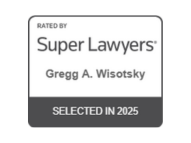Diana Palma unknowingly hit and pulled a pedestrian down a street in Red Bank, who had become stuck beneath her SUV. The pedestrian later died of injuries sustained during the incident. State v. Palma, 426 N.J. Super. 510 (2012).
Palma plead guilty to careless driving and was sentenced to fifteen days in jail. She also had her license was suspended for 90 days and was required to pay fines and other costs adding up to $241. She appealed her sentence handed down in municipal, specifically focusing on the jail term and the license suspension. The Superior Court in Monmouth County affirmed the municipal court’s decision.
However, the Appellate Division reversed. The Court found that the municipal court judge’s “findings included a detailed description of the accident, not grounded on defendant’s factual basis, but presumable gleaned from his own review of the discovery materials and the newspapers.” Id. at 515.
The judge found that at the time of the accident Palma was on her cell phone. This was inaccurate and not supported by any evidence in the case. In fact, it was confirmed that, at the time of the accident, Palma was not on her phone, not intoxicated, not asleep at the wheel, and not even speeding.
“Judges may only impose a license suspension or custodial sentence in careless driving cases that present aggravating circumstances.” Id. at 519. After determining whether or not there are aggravating circumstances the judge is required to balance the Moran factors.
The Moran factors “provide the foundation for judicial discretion in guiding whether to impose a license suspension.” Id. at 517-518. They include, in part:
“The nature and circumstances of the defendant’s conduct, including whether the conduct posed a high risk of danger to the public or caused physical harm or property damage; The defendant’s driving record, including defendant’s age and length of time as a license driver, and the number seriousness and frequency of prior infractions; Whether the defendant was infraction-free for a substantial period before the most recent violation or whether the nature and extent of the defendant’s driving record indicated that there is a substantial risk that he or she will commit another violation;Whether the character and attitude of the defendant indicate that he or she is likely or unlikely to commit another violation;” Id. at 518.
The Appellate Court sent the case back down to the Superior Court for sentencing to be decided in accordance with these factors.












